- JSW MG Motor India
- Honda Motorcycle & Scooter India
- HMSI
- Ashok Leyland
- Federation of Automobile Dealers Association
- FADA
- PremonAsia
- Rahul Sharma
- C S Vigneshwar
Digital has now moved from ‘Nice to have’ to Necessity: Vinkesh Gulati
- By T Murrali
- December 19, 2020
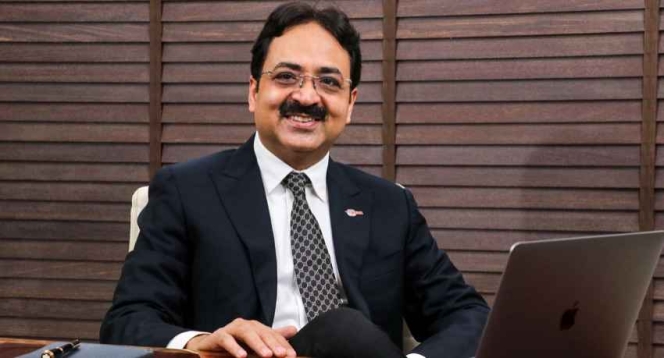
Q: Congratulations on assuming the charge of the President of FADA. What are your immediate priorities?
Gulati: Thank you!
The past eight to nine months have been a challenging time for the entire humanity and every business sector. It has been a difficult phase for the dealer fraternity too. We have worked in very adverse conditions with zero business and zero earnings, along with a high operational cost. Post reopening of dealerships, proper decontamination and sanitisation of the entire premises, vehicles, employees, etc., have added cost to dealers who were already seeing slow sales for over 18 months in the pre-COVID era.
We are a resilient lot, and COVID has taught us to make tough decisions to ensure that our business and community survive, while offering the best of our services to customers. During my tenure, I will rigorously take up all our dealer issues at every possible platform and offer the association the finest representation, better visibility and hearing, offering a competitive business and operational environment to our fraternity.
The automobile industry has been an important driving force in India’s economic growth. Reviving the automobile industry is vital to regain lost momentum in the economy. The Government and the sector need to work together to strengthen the industry, wherein the dealer fraternity is an important element in the system.
One of the key issues which we will be working upon is improving dealer margins. Over the years, profitability has dwindled due to high costs and low operating margins.
Auto dealerships in India are operating at an average net profit level of 0.5 percent to one percent of the total turnover, which is much lower than the global standard, as internationally, dealer margins range from seven percent to 12 percent on selling price of the vehicle.
We have already written to SIAM about this, and we will further strongly urge all our OEMs to make the dealer business more sustainable and shockproof.
While we were trying to bring auto dealers under the ambit of MSME, we will up the ante further and make sure that dealers are treated at par with other businesses who are reaping the benefits of being an MSME.
Further, as a category, 2-wheelers comprise 75 percent of the sales in India, and I am working to make an exclusive 2-wheeler vertical at FADA.
This will specifically work on the nuances of 2-wheeler dealership such as sub-dealers, brokers etc. The dynamics of 2-wheeler dealers are very different from 4-wheeler dealers and hence need special attention. As they say, fortune is at the bottom of the pyramid!
FADA will continue to take up issues concerning regulatory and legislative burdens, representing the dealer fraternity across every possible platform. We will continue to reach out to our principals and build strong relationships moving ahead.
Q: FADA has been working on increasing dealer margins for ages but ends up in a stalemate. Where is the issue? How are you going to tackle this?
Gulati: Yes, this is one issue which we have been working for many years, but efforts were not made concretely until sometimes back. It’s during the 2nd Auto Retail Conclave, when we brought up the issue to our executive committee, had a panel discussion exclusively on dealer margins. There onwards, we started building momentum with continues efforts in this direction, and a few months back we also did a study on dealer margin offered by individual OEM to their respective dealers across the product lineup. This was an eye-opener for the entire fraternity as nothing of this sort was brought out in the past; this showcased that Indian dealer’s community were working on a minimal margin which was way below the global standards.
I am happy to mention that post this study, few OEMs have reviewed their dealer margin, few are in discussion with their management and respective dealer council. However, the increased margins are still not at a level which we have been asking for, but a movement has started, which is quite encouraging for the entire community.
Dealership business has a significant daily expense which is addressed by the dealer from his marginal profit. A better profit margin will help the dealer to re-invest a subsequent amount of his earning for the development and expansion of his business, which in return will add up a new business to OEMs.
We will continue to do this kind of studies in times to come and also keep negotiating with our principals as they also understand that their first customers are not in good shape and they require higher margins to sustain their business.

Q: What according to you are the skill gaps persist in the automotive industry still and how FADA is addressing this?
Gulati: Skill gap is a subject which is never-ending as technology keep changing, and we need to make a continuous effort to upgrade our manpower. In recent time, the automobile industry has gone a long way in terms of technology upgrade.
To address this change, all the three auto Associations (Automotive Component Manufacturers Association of India (ACMA), Federation of Indian Automobile Dealer Associations (FADA) and Society of Indian Automobile Manufacturers (SIAM)) have come together in tune with National Skill Development Council and created ASDC (Automotive Skill Development Council) which looks to reduce the gap in between yesterday’s skills and today’s requirement. FADA has been making a continues effort to keep our dealership manpower at par with the newer technologies.
At FADA, we are starting up with a FADA Academy which will hold courses for Dealer Principals and their Chief Experience Officers to train them in running an efficient dealership business from all aspects.
Q: With more than 50 percent of the work in purchasing any vehicle done online, where do you see the role of dealers in the future? Do you see the new trend fuelling unemployment further?
Gulati: Getting prospective customers through the online route is a growing trend. Dealers and manufacturers have been active on online platforms for quite a long time now. The pandemic is the reason for this change in consumer behaviour. Earlier, customers had to visit dealerships several times before the final buy. e.g. all loan formalities, document verification, vehicle test drive etc. These are now offered online or at the doorstep. But for the final sale, customers have to visit the dealerships to test the vehicle and take delivery.
Today every customer is well informed. The vehicle-buying experience involves several steps, right from an online search, specific automobile website visits, going through views, reviews, product comparison, collecting information from peers, social media and users and evaluating a brand, product and its services.
Only after doing all these research consumers make their decision. It is not just a transaction for the customer, but more about in getting into a relationship of trust. That is where the dealerships come into play. Every customer wants to experience the vehicle physically before closing the deal. More importantly, they want to meet up face-to-face with the dealer and satisfy themselves before committing to this high-ticket purchase.
I don’t think there is any change in the playbook, but digital has now moved from “Nice to have” to Necessity. In this COVID era, with total lockdown, digital marketing has played a significant role in boosting sales and smooth execution. Every dealership has initiated digital training of its manpower, equipping them to conduct sales coordination through a digital platform. This initiative has further enhanced its sales and service reach. Dealerships must be the most frugal and flexible link across the automobile network.
Dealers and dealerships have always been the face of the brand and will continue to be so. I don’t see any immediate challenge or threat to the dealership business. However, with companies being more aggressive and active on online platforms, this will add on to dealership engagement with the brand and the customers, helping them further to enhance their sales and service reach and experience.
 Q: What are the challenges you face with emerging technology trends like vehicle electrification?
Q: What are the challenges you face with emerging technology trends like vehicle electrification?
Gulati: I don’t see vehicle electrification as a challenge for the dealer fraternity. The dealer community has been one of the most adaptable segments of the automobile ecosystem. We have always strived to keep ourselves at par with the manufacturers, and it’s business requirement, product and services utility. The dealer business is one business which significantly depends on its skilled workforce across the offerings such as sales, aftersales, engineering, etc. With every new product or technology, the dealer in association with its OEM partner makes certain that it initiates rigorous training for its employees so that it can offer the best service to its customers on behalf of the brand.
As far as vehicle electrification is concerned, India is still at a very initial level as electric PVs still have less than 0.25 percent market share. The EV segment requires immense Government support in terms of infrastructure, subsidy, allowance, recognition, etc., to get the segment to grow. I don’t want to comment on the technicalities of the segment and its products and services. Instead, on behalf of the entire dealer fraternity, I would like to assure that as a community we are committed to offering all necessary support and service to the Government for its vision about the EV industry.
Q: Episodes like FIAT & Peugeot (decades ago) and GM & MAN Trucks (in the recent past) etc., exiting the Indian market continues, leading the dealerships to lurch. What kind of safeguard mechanisms can we have to support the dealer community?
Gulati: Setting up a global brand dealership in India is a massive cost which varies from brands to segment, size of the dealership, region, location, etc. On an average setting up a premium 2-wheeler brand dealership cost somewhere around INR8-10 crore whereas setting up a premium 4-wheeler brand requires close to INR 20 - 30 crore. It is not just the setting up of a dealership which is a cost, the operation of a dealership is also a huge which involves day to day operational cost, vehicle stocking, employee salary etc. The dealer bears all this. As you know, the dealership business operates on a very minimal profit margin; any such activity by any brand ends up leading to capital loss along with loss of jobs in the sector. And now the pandemic poses another challenge for the dealer fraternity.
For example, the recent announcement by Harley-Davidson to discontinue its manufacturing and sales operations in India has left its Indian dealers stranded. This will result in the closure of 35 Harley-Davidson dealerships, with an approximate capital loss of INR 110-130 crores, besides also leading to a job loss of around 1,800-2,000 people at dealerships.
This is the fourth instance of automobile companies exiting India in the last three years (since 2017). Earlier, General Motors, MAN Truck and UM Lohia had quit their Indian operations, leaving their dealers in a similar fix. Due to FADA’s strong intervention and the Indian Government’s full-fledged support, General Motors and MAN Trucks had partially compensated their channel partners, but the UML matter remains unresolved till date.
Had there been a Franchise Protection Act in India, brands like these would not have abruptly closed their operations, leaving their channel partners and customers in the lurch.
We are already working on a draft with our legal team and have initiated communication with other retail associations to bring the Franchise law in India, which will support the dealer fraternity in the dire situation of an exit or termination.
We would also request the Government to initiate the law on priority as this law will help level the playing field for large international and domestic automakers and dealers and also help in regulating over-dealerisation.
Q: What kind of support/guidance FADA has given to its members to tide over the current situation triggered by the pandemic?
Gulati: These are unprecedented times. Everybody is making the best efforts to emerge from it in their own way. The auto dealership is one such business which was deeply impacted by COVID-19. The auto dealership is a very marginal profit business, and we do not have large funds like car and component manufacturers have, which makes it more difficult for us to emerge from this difficult time. The industry was already struggling with a 15 to 16-month slowdown, and the lockdown has pushed the entire industry further back.
FADA has provided all possible and necessary help to its dealer members. At the time of the lockdown, FADA wrote a letter to Prime Minister Narendra Modi to apprise him about the dealers’ issues and suggesting dealership survival and demand revival initiatives. Apart from this, FADA wrote a letter to SIAM making them aware of the situation of the dealers, requesting them to review the dealer margin and extend their support so that dealer can survive these difficult times. FADA quite actively worked to protect dealers from the loss on remaining stocks of BS-IV vehicles from the ban on the sale. The association petitioned the Supreme Court to extend the dateline for sale of these vehicles. At the same time, while securing the future of dealers, FADA demanded that car makers increase the dealer margin to five percent PBT and reduce the infrastructure cost by 25 percent.
FADA conducted online training for its dealer brothers, training them to prepare for maximum work with limited resources. (MT)
Rural Demand Drives PV Retail Sales In CY2025, Barring Construction Equipment All Segments In The Green
- By MT Bureau
- January 07, 2026

The Federation of Automobile Dealers Associations (FADA), the apex body representing automobile dealers in the country, recently released retail sales data for the 2025 calendar year, reporting total registrations of 2,81,61,228 units, which was 7.71 percent higher over the 2,61,45,206 units recorded in 2024.
The apex body stated that 2025 was characterised by two distinct periods, with sales remaining muted from January to August before an upturn from September to December following the implementation of GST 2.0.
In the Passenger Vehicle (PV) segment, annual retail sales reached 44,75,309 units, a growth of 9.70 percent. Data indicated that rural markets outperformed urban areas, with rural PV sales rising by 12.31 percent compared to 8.08 percent in cities.
Two-wheeler (2W) segment saw registrations of 2,02,95,650 units, up 7.24 percent, while the Three-Wheeler (3W) and Commercial Vehicle (CV) sectors grew by 7.21 percent and 6.71 percent respectively. The Tractor segment recorded the highest growth rate at 11.52 percent, totalling 9,96,633 units. Conversely, Construction Equipment (CE) was the only category to decline, falling 6.67 percent to 74,029 units.
For December 2025, total vehicle retail reached 27,10,698 units, a 12.27 percent increase over December 2024. Inventory levels for Passenger Vehicles stood at 30–35 days, while Two-Wheeler inventory was maintained at 20–25 days. FADA noted that the year-end performance was supported by aggressive original equipment manufacturer (OEM) schemes and improved consumer sentiment.
C S Vigneshwar, President, FADA, said, “CY’25 has been a year of resilience and ultimate recovery for the Indian Auto Retail. While the first eight months were overshadowed by high interest rates, inflationary pressures and election-related caution, the final four months - post the introduction of GST 2.0 - acted as a catalyst. The reduction in effective tax rates on vehicles not only made mobility more affordable but also reinvigorated a market that was showing signs of fatigue. Rural India has emerged as the clear driver of growth this year. The double-digit growth in Tractors and the fact that Rural PV sales outpaced Urban by a significant margin confirms that the Bharat story is strengthening. We are seeing a structural shift where personal mobility is becoming a necessity in the hinterlands, supported by better crop realisations and improved infrastructure.”
Looking ahead to January 2026, FADA maintains a cautious outlook due to the high base effect from the previous year and the conclusion of year-end discount cycles. The association expects the market to enter a period of stabilisation as dealers focus on liquidating remaining 2025 stock.
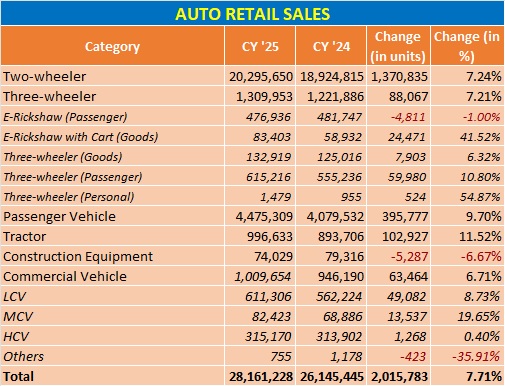
Tarun Garg Takes Charge As Hyundai Motor India’s First Indian MD & CEO
- By MT Bureau
- January 01, 2026
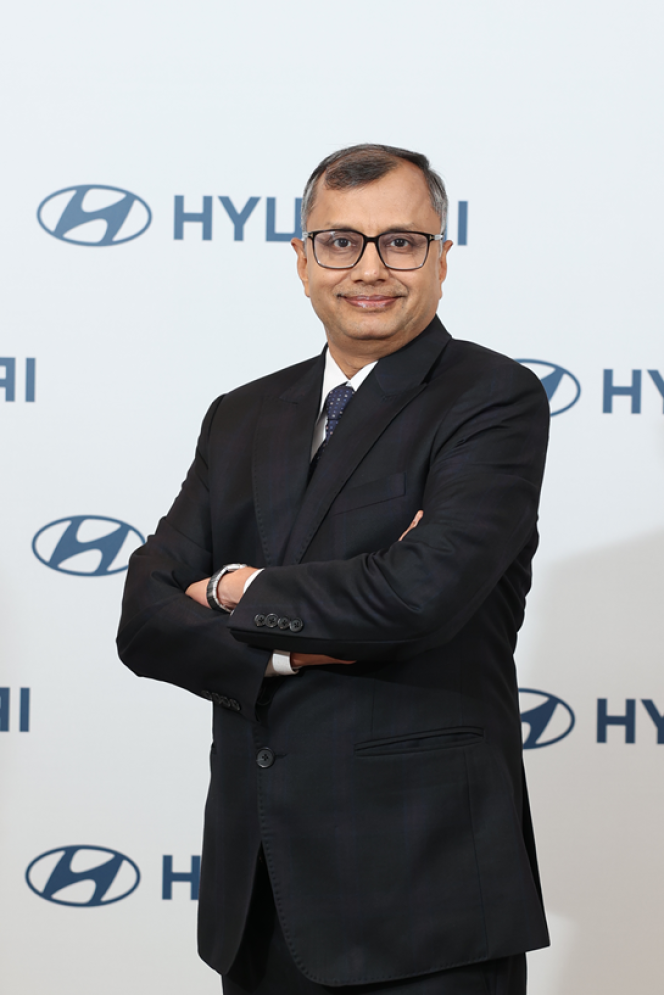
Hyundai Motor India (HMIL), one of the leading passenger vehicle manufacturers, has announced that Tarun Garg has assumed the role of Managing Director and Chief Executive Officer, effective today.
With this, Garg becomes the first Indian national to lead the company since its inception 29 years ago. He comes with over 32 years of experience in the automotive industry and previously served as the Chief Operating Officer of Hyundai Motor India. His appointment comes as the company prepares for its next phase of growth in India.
HMIL has outlined an investment roadmap of INR 450 billion to be implemented by FY 2030. Under Garg’s leadership, the company will focus on four pillars:
- Future-Ready Strategy: Acceleration of electric vehicles, hybrids and connected mobility.
- People and Market Focus: Support for employees and the network of dealers and suppliers.
- Customer-Centric Approach: Building trust and experience across touchpoints.
- Production and Exports: Enhancing indigenisation at plants and positioning HMIL as a hub for exports to emerging markets.
“India’s automotive industry is at an exciting inflection point, driven by innovation, sustainability, and evolving customer aspirations. It is an extraordinary honour to lead Hyundai Motor India at this defining moment in our three-decade long journey. My vision is to build on our strong foundation while accelerating HMIL’s transformation towards sustainable growth, technological leadership, and unmatched customer delight. We will continue to reinforce our commitment to ‘Make in India’ and position HMIL as a global hub for exports. Aligned with Hyundai’s global vision of ‘Progress for Humanity,’ we will strengthen Hyundai’s legacy and create meaningful mobility solutions that not only empower people but also connect communities and enrich lives. The future is ours to build and I am committed to leading HMIL with agility, conviction and purpose,” said Garg.
During his time as Chief Operating Officer, HMIL reported record sales for three years and completed an IPO in 2024. Garg also launched the ‘Samarth by Hyundai’ initiative to improve accessibility for people with disabilities.
Before joining HMIL, Garg held positions at Maruti Suzuki India, including Executive Director of Marketing, Logistics, Parts and Accessories. He is a mechanical engineer from Delhi Technological University and holds an MBA from IIM Lucknow.
Mahindra Bets On Mobility Innovation And Skills As Automotive Outlook Turns Transformative
- By MT Bureau
- December 31, 2025
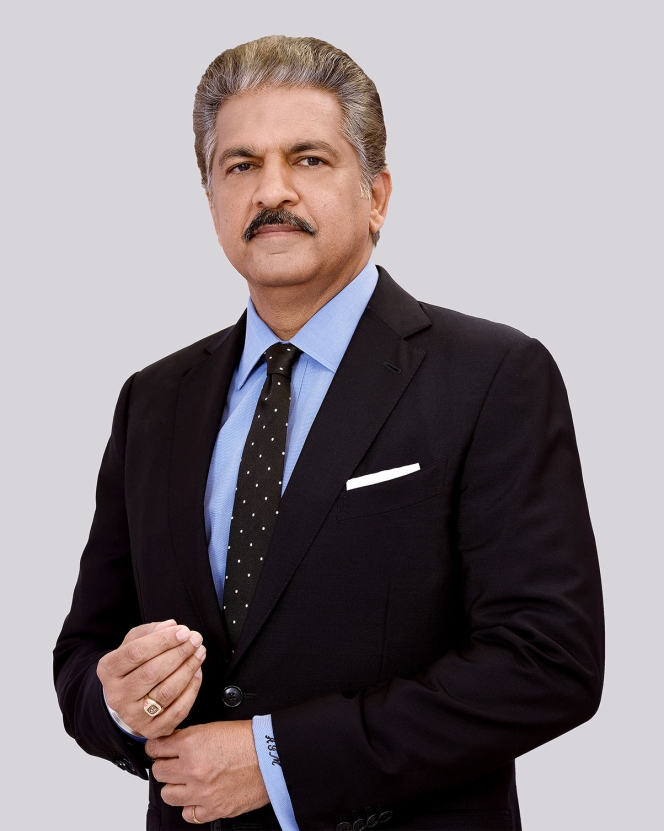
Mahindra Group Chairman Anand Mahindra has struck an upbeat yet reflective note on the automotive industry’s outlook, signalling confidence in demand, technology-led disruption and India’s growing role in shaping the future of mobility. In a year-end address to employees, Mahindra underlined that the Group’s recent performance is less about short-term numbers and more about structural shifts underway in the business and the broader industry.
The Group’s automotive operations stood out in what Mahindra described as a year of ‘market leadership and redefined expectations’.
Mahindra & Mahindra’s SUV portfolio delivered a record market share, consolidating the company’s position in one of India’s most competitive and fast-evolving segments. The performance, he suggested, reflects a sharper understanding of consumer aspirations rather than cyclical tailwinds.
Beyond passenger vehicles, Mahindra’s farm equipment business recorded its highest-ever quarterly market share, while its electric three-wheeler business retained leadership in a crowded and price-sensitive market. Together, these segments underline the Group’s diversified exposure to rural demand, urban mobility and electrification – three pillars that continue to define India’s automotive growth story.
Mahindra framed these achievements as ‘launchpads’, arguing that the Indian automotive industry is entering a phase where execution and innovation matter more than legacy positioning. Once known primarily for rugged, utilitarian products, Mahindra is now increasingly associated with modern design, connected technologies and electric mobility.
“EVs did not just change our portfolio; they changed the conversation,” he said, signalling that electrification has become central to the Group’s identity rather than an adjunct strategy.
This shift mirrors broader trends across the Indian automotive sector, where OEMs are balancing near-term internal combustion engine demand with longer-term bets on electric platforms, software-defined vehicles and advanced manufacturing. Mahindra’s message suggests confidence that Indian players can compete not just on cost, but on technology and relevance.
A significant part of Mahindra’s outlook is shaped by the rapid advance of artificial intelligence and automation. While AI is often seen as a disruptive force for manufacturing jobs, Mahindra offered a contrarian view, particularly relevant for automotive production and supply chains. He argued that AI will act as an ‘accelerator, not a threat’, enhancing the value of hands-on skills on the shop floor.
According to Mahindra, technicians, machinists and operators who can work alongside intelligent systems will become premium assets. In an automotive context, this has implications for everything from smart factories and predictive maintenance to quality control and EV assembly.
“AI can turn blue collar into gold,” he remarked, highlighting a future where digitally enabled manufacturing skills command higher productivity, dignity and income.
The Group is backing this view with investments in skilling and education. Mahindra highlighted its involvement with vocational training initiatives and engineering talent development, positioning skills as a strategic enabler for the next phase of industrial growth. This emphasis also aligns with global shifts in talent mobility, as tighter visa regimes in the West potentially create opportunities for India to retain and attract high-quality engineering and technology talent.
For the automotive industry, this could translate into stronger domestic R&D capabilities, deeper supplier ecosystems and global mandates being executed from India. Mahindra argued that the country has an opportunity to move from being a global ‘back office’ to a global ‘think tank’, especially as Global Capability Centres expand their footprint.
Looking ahead, Mahindra acknowledged that the external environment remains uncertain, shaped by geopolitical volatility, technological disruption and evolving consumer behaviour. However, he positioned uncertainty as a test of resilience rather than a deterrent. With sharper capabilities in mobility, electrification and manufacturing skills, the Group believes it is well placed to chart new growth paths.
For India’s automotive industry, the message is clear: leadership in the next decade will belong to companies that combine product innovation with talent development and technological confidence.
As Mahindra put it, “the future belongs to those who build it” — a sentiment that resonates strongly as the sector navigates its most significant transformation in decades.
Neolite ZKW Lightings Files For INR 6 Billion IPO
- By MT Bureau
- December 30, 2025
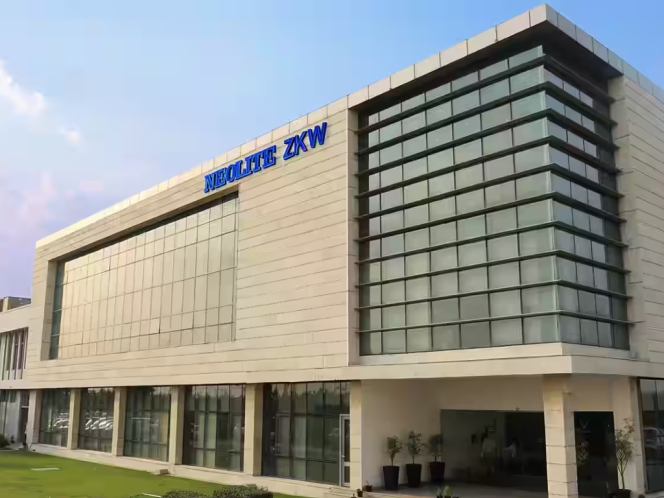
Haryana-headquartered Neolite ZKW Lightings, an automotive lighting manufacturer, has filed a Draft Red Herring Prospectus (DRHP) with the Securities and Exchange Board of India (SEBI) for an initial public offering (IPO).
The IPO comprises a fresh issue of equity shares worth up to INR 4 billion and an offer for sale (OFS) of INR 2 billion by existing shareholders, including Rajesh Jain, Neokraft Global Private and ZKW Group.
The company intends to allocate the net proceeds from the fresh issue to expansion and financial goals. This includes a new greenfield facility at an estimated investment of INR 1.5 billion in Kancheepuram, Tamil Nadu. An estimated INR 790 million towards plant, machinery and electronic expansion at current sites. Furthermore, INR 650 million towards repayment or prepayment of borrowings.
Founded in 1992, Neolite ZKW holds a 34.43 percent market share in India's commercial vehicle lighting segment for FY2025. The company maintains a strategic alliance with the ZKW Group, a subsidiary of LG Electronics.
The company operates three manufacturing units in Bahadurgarh and Pune, serving over 40 OEMs including Tata Motors, Stellantis and Daimler. Its portfolio includes 830 SKUs, with a focus on LED and electric vehicle (EV) lighting solutions.
For FY2025, the company reported INR 5.12 billion in revenue, of which exports contributed 55.08 percent share. The net profit for FY2025 came at INR 528.24 million, as against INR 155.85 million in FY2023. The order book as of 31st October 2025, stands at INR 1.71 billion.
At present, the company exports to over 50 countries, including regions in North America and Western Europe, positioning it as a significant Indian exporter of automotive components.




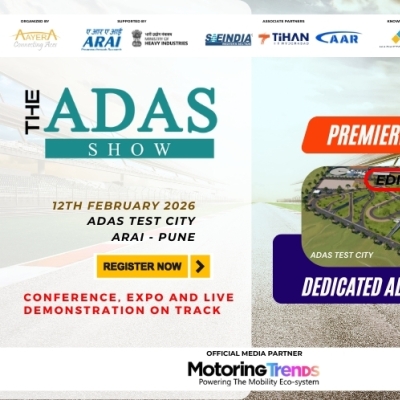
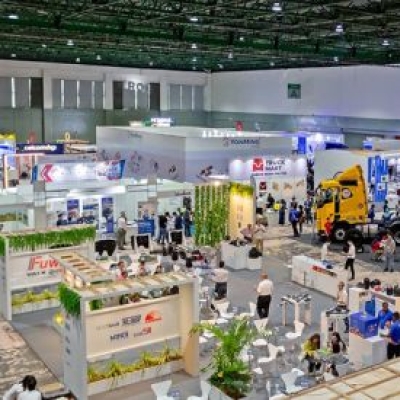

Comments (0)
ADD COMMENT